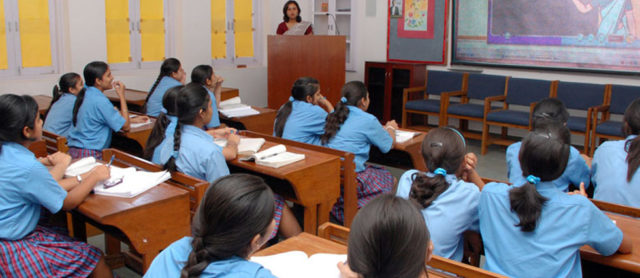A teacher once told me,
“One doesn’t need to be taught about Sustainable Development. It is a fundamental moral.”
Well, how to shape that moral in ourselves and the generations to come when all we have is a misplaced sensibility towards the environment that is so essential for our very survival? And how do we undo what has been normalized through generations?

Thousands of debates, seminars and conferences have been held to develop an understanding about how environment has to sync with development and yet the result of sensitization is minimal. We have failed, not as policy-makers, but as educators. An integrating approach towards environmental education has been missing in the Indian education system. Yes, some may argue that we have Environmental Studies as a subject in schools, but to witness a drastic change in the attitude of children towards their ‘protector’ it is essential that our teaching techniques be changed. Having only a fair knowledge about the environment may not amount to enough; students must read, discuss, and witness basic environmental issues that we are facing today.
At this point, most of us would agree that the role of youth in attaining sustainable development is an issue which is at the core of development. SDGs (Sustainable Development Goals) are the most ambitious goals and to attain the vision, we might have to be flexible with the choices we make and the decisions we take. Today’s youth are diverse and are not only well informed but they’re well connected. So the bigger question is what is stopping them from realizing the dream? How to make children understand that small actions become huge? Do they see themselves playing an important role in our country’s ‘today’ and ‘tomorrow’?
The indulgence in thoughts like, “well, I don’t care” is dangerous at this point. The solution is to understand, believe and act together. The importance of good quality education in marching towards sustainable development was emphasized at the UN World Summit in Johannesburg in 2002. It majorly talked about the instilling of knowledge, values, understanding and skills to achieve sustainable development.
Schools can start by making children identify environmental issues and how solving them is not only a ‘top-down approach’ but requires attention at the grassroots level. Students need to engage in activities like support campaigns, backing citizen activities, innovative counter-models, etc. from primary level. Engaging projects like, taking pictures of anything close to the set goals, enacting plays projecting similar issues, preparation of innovative banners, etc. might interest students and hold their attention span. Also, students must be encouraged to have their own ideas about solving environmental issues. To achieve this, the system must adapt a liberal approach to help students project themselves without anyone’s help and without much restrictions.
For the youth to change the progress of history, it is necessary they take part in things that matter. Critical thinking, problem solving and employing a variety of educational methods to illustrate the process must be encouraged. This could be an effective way in encouraging a positive behavior towards environment and will ensure that students are not just confined to the ‘idea’ of an environment through books.


























